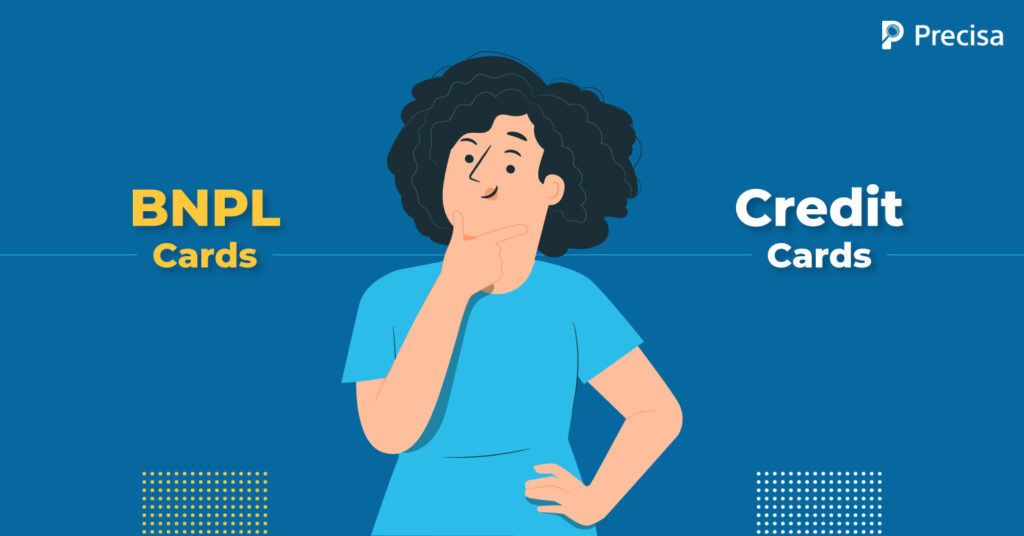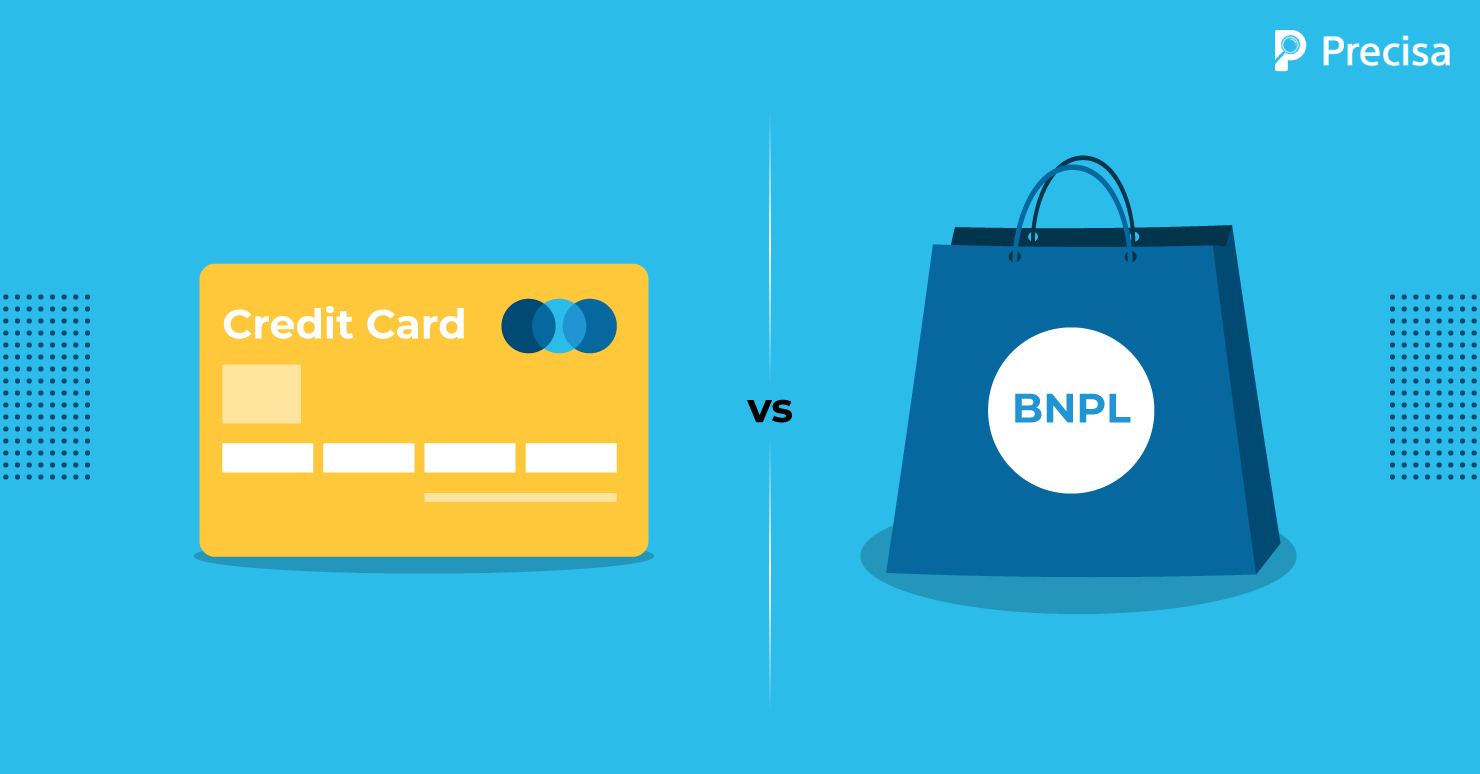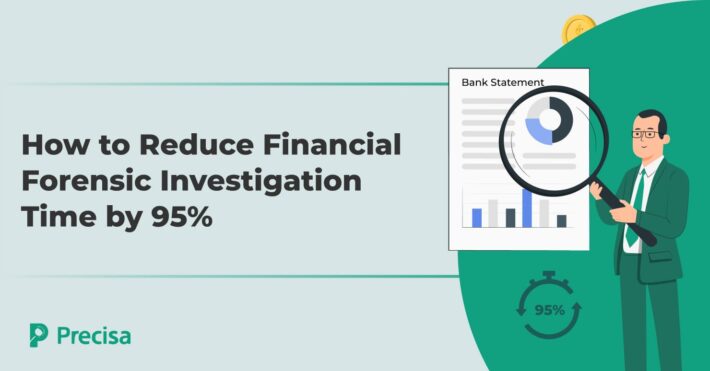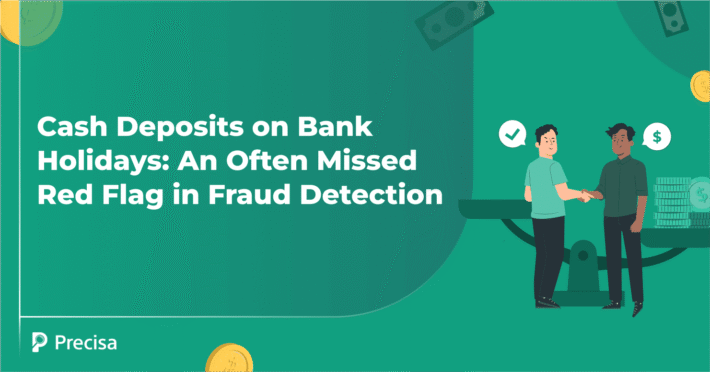BNPL Cards vs. Credit Cards: All You Need to Know

Plastic money or credit cards is not something new. It has been a popular way of purchasing goods and services for decades now for end consumers. However, credit cards have faced stiff competition from alternatives over the past few years. BNPL cards or Buy Now-Pay Later tops that list.
BNPL lets you buy what you need and pay later. While most of the features look similar to credit cards, there are many parameters. What is the difference between using a credit card versus the Buy Now, Pay Later method? Is one more cost-effective than the other? Find out from this article.
BPNL Cards Vs. Credit Cards – The Similarities

BNPL cards offer a credit-free period to the cardholder as with credit cards. Credit cards allow you to spread your purchases over a while, typically 12 months (sometimes longer, like three years), usually in the form of equated monthly installmentsinstalments (EMIs).
Likewise, you can avail of this facility to convert your payment into EMIs from BNPL lenders at the time of purchase. However, few BNPL lenders provide EMIs for more extended repayment periods, like in three, six, or twelve months.
However, you should note that not all BNPL lenders provide the option of converting payments into EMIs. Therefore, the best way to find out this information is to contact the lender or review the contract.
So, interest-free periods and EMIs are the similarities we see between credit cards and BNPL cards. But, in the big picture, there are more differences than being similar. Let’s find out what they are?
Buy Now, Pay Later Vs. Credit Card: The Differences
Here are the ways BNPL and credit cards are different from each other and how it applies to the end-user:
1. Interest-free period
Although both options offer interest-free periods, the duration of these periods varies slightly. For example, credit cards typically offer a 45-day interest-free period. Whereas in BNPL cards, it is between 15 to 30 days.
2. Charges
Annual Fee: Credit cards silently carry those extra costs. It can be a joining fee or a yearly fee. The fees can be huge with high-end cards.
In contrast, for BNPL, there are no joining or annual fees. Therefore, you can sign up for free and store the credit limit for later use.
Interest: In both facilities, you need to pay for the interest if failure to pay back the amount in an interest-free period. Credit cards have higher rates of interest.
Despite BNPL’s lower interest rate than credit cards, it is still considered high. The interest charge on both schemes is between 20% p.a. to 30% p.a.
Processing Fee: Unless you convert credit card purchases into EMIs, there is no processing fee.
Likewise, many BNPL providers charge no processing fee for purchases unless for an EMI plan.
3. Credit limit
As BNPL cards have OTP-based KYC, there is a regulated credit limit. The Reserve Bank of India (RBI) limits the amount of OTP-based KYC loans to Rs 60,000 per year.
On the other hand, the credit card limit is assessed by the applicant’s credit score and annual income. So, if you require credit for more significant transactions, a credit card could do the needful but with higher regulations and scrutiny.
4. Eligibility
There are strict eligibility requirements for credit cards. You would need minimum income requirements, credit scores, and reliable credit histories. Not meeting the pre-defined criteria will end in loan rejection.
On the other hand, Buy Now, Pay Later is not that strict with assessment. Fintech or e-commerce companies offer BNPL schemes that are quick and easy.
Upon registering for free and providing the required details, your credit line will be ready for use. This is a significant reason why BNPL cards are gaining popularity among millennials.
5. Convenience
Applying for a credit card is a lengthy and arduous process that requires multiple verifications. Most credit card applications process within 3-4 weeks. BNPL cards, in contrast, are a quick and easy process. A line of credit is available within minutes.
One OTP verification, and you can complete your payments via BNPL cards. That’s not the case with a credit card. For credit cards, you need to provide the cardholder’s name, credit card number, expiry date, and CVV.
Finally, the transaction completes only after entering OTP that comes to a registered mobile. Although it is a protective measure against scams and thefts, you can’t stand the process when in a rush.
6. Acceptance
Most BNPL schemes run by Fintechs are limited to their partnered merchants. It is the same with eCommerce companies as well. Consequently, it doesn’t work outside the boundary.
Let’s say you have an Amazon Pay Later balance of Rs 10,000; you can only use it for purchases made on Amazon. In contrast, credit cards work worldwide. Almost every merchant accepts credit cards, both online and offline.
So, which is the best one to opt for with these differences on cards?
Credit Card or BNPL Card: Which One Should you Get?
There is no one hard and fast judgement in this matter. As we have put the differences at your disposal, it is easy to compare them while choosing the best.
Sometimes credit cards outperform the restrictions of BNPL, while at times, BNPL cards surpass credit cards in terms of accessibility. The call is upon the applicant.
Simultaneously, you can have a quick check on the points below to select the credit card of BNPL based on the following facilities:
- The merchant’s payment methods
- Interest rate, if any
- Transaction fee, if any
- Reward points and cashback
- Payment convenience
- EMIs facility and interest charges
Credit cards and BNPL cards have pros and cons and are subject to usage and needs. Need higher-value purchases and higher-credit limits? Credit cards suit your purposes. Need limited budget funding instantly? Then Buy Now, Pay Later could be your friend. Choose wisely between the two.
In conclusion, both credit cards and BNPL cards have pros and cons and are subject to usage and needs.
Need higher-value purchases and higher-credit limits? Credit cards suit your purposes. Need limited budget funding instantly? Then Buy Now, Pay Later could be your friend.
Choose wisely between the two. Need more such interesting and informative write-ups? Subscribe to Precisa today! For more information on how we can help, reach out to us at contactus@precisa.in



